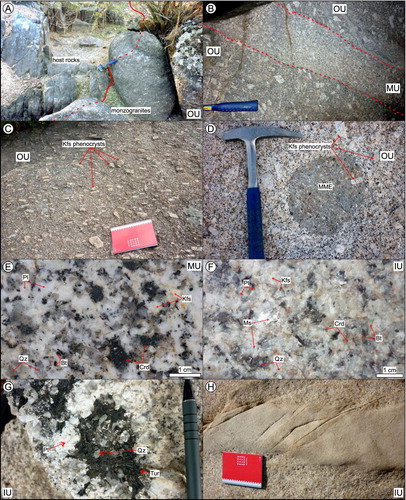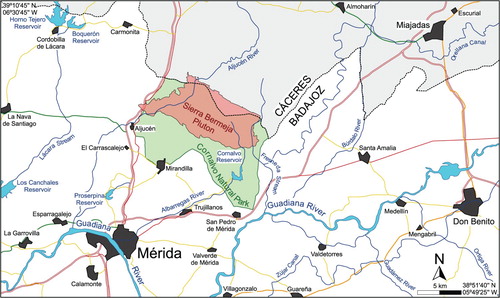Figures & data
Table 1. Inventory of Geological Points of Interest (GPI).
Figure 2. Geological map of the Iberian Massif. The Nisa-Alburquerque-Los Pedroches Magmatic Alignment is emphasised. The subdivision of the Iberian Massif is based on CitationJulivert, Marcos, and Truyols (1972); the extent of the Obejo-Valsequillo domain is based on CitationBandrés et al. (2004), CitationMartín Parra, González Lodeiro, Martínez Poyatos, and Matas (2006) and CitationPalacios et al. (2013); Variscan granitoids adapted from CitationRodríguez Fernández and Oliveira (2015); and major tectonic elements adapted from CitationDíez Fernández and Arenas (2015).

Table 2. Key features of monzogranite types of the Sierra Bermeja Pluton.
Figure 3. (A) Sharp intrusive contact between the OU monzogranites and host rocks (GPI-03). (B) Dyke of MU intruding into the OU (GPI-06). (C) Moderately oriented Kfs phenocrysts in the OU main monzogranite type (GPI-07). (D) Mafic magmatic enclave including a K-feldspar phenocryst (GPI-10). (E) Scanned section of the MU main monzogranite type. (F) A detail picture of the IU main monzogranite type. (G) Tourmaline in pegmatite segregates. (H) Aplite dyke intruding into the IU.


